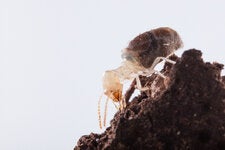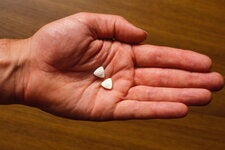How Close Are the Planet’s Climate Tipping Points?
Earth’s warming could trigger sweeping changes in the natural world that would be hard, if not impossible, to reverse.
By Raymond Zhong and


Advertisement
Earth’s warming could trigger sweeping changes in the natural world that would be hard, if not impossible, to reverse.
By Raymond Zhong and


Scholars have struggled to identify fragments of the epic of Gilgamesh — one of the world’s oldest literary texts. Now A.I. has brought an “extreme acceleration” to the field.
By


Old Timer, a male first photographed in 1972, was spotted last month near Alaska, enduring in the Pacific Ocean while some other humpbacks have struggled in a changing environment.
By


Marketing firms are using artificial intelligence to help analyze influencers and predict whether they will opine about the election.
By


Advertisement
As Democrats Gather in Chicago, These Audiobooks Offer Context
Political histories, a courtroom drama and the memoir of a daughter of the South Side illuminate the legacy of the 1968 Democratic National Convention.
By

The Hacking of Presidential Campaigns Begins, With the Usual Fog of Motives
Donald J. Trump said Iranians hacked his campaign but only obtained “publicly available” data. Microsoft said a “high-ranking official” at a presidential campaign was a hacking target.
By David E. Sanger and

2024 Presidential Election Calendar
Here are important dates and voting deadlines for the 2024 election.
By Andrew Park and

The Founders Saw This Insane Political Moment Coming 237 Years Ago
They were worried about what we would do with democracy. They had good reason to be.
By

Tracking the Swing States for Harris and Trump
The presidential race will most likely come down to voters in 10 states that remain competitive.
By Lily BoyceEli Murray and

I Am the Walrus but This Fossil Was Not
Although an extinct animal was from a different group of marine mammals, an examination of fossils showed it evolved a way of eating that was very similar to that of modern walruses.
By

Beware the Toxic and Explosive Blue Backpack This Termite Carries
Scientists studied the unusual chemical reaction used by a species of the insect in an act of self-sacrifice to save nests from invaders.
By

Unresponsive Brain-Damaged Patients May Have Some Awareness
Many patients thought to be in vegetative or minimally conscious states may be capable of thought, researchers reported.
By

How Glue Helps Frogs Out of Sticky Situations
You’ve heard of a “frog in your throat,” but probably not like this.
By

Advertisement
How ‘Deepfake Elon Musk’ Became the Internet’s Biggest Scammer
An A.I.-powered version of Mr. Musk has appeared in thousands of inauthentic ads, contributing to billions in fraud.
By

A.L.S. Stole His Voice. A.I. Retrieved It.
In an experiment that surpassed expectations, implants in a patient’s brain were able to recognize words he tried to speak, and A.I. helped produce sounds that came close to matching his true voice.
By

How the World’s Oldest Humpback Whale Has Survived Is a Mystery
Old Timer, a male first photographed in 1972, was spotted last month near Alaska, enduring in the Pacific Ocean while some other humpbacks have struggled in a changing environment.
By

A California Bill to Regulate A.I. Causes Alarm in Silicon Valley
California state senator Scott Wiener wants to stop the creation of dangerous A.I. But critics say he is jumping the gun.
By Cade Metz and

A 481-Year Age Difference? For Some Readers, That’s Hot.
Disappointed by swipe culture and, perhaps, reality, some readers pine for the much (much) older “shadow daddies” of romantasy novels.
By

Piecing Together an Ancient Epic Was Slow Work. Until A.I. Got Involved.
Scholars have struggled to identify fragments of the epic of Gilgamesh — one of the world’s oldest literary texts. Now A.I. has brought an “extreme acceleration” to the field.
By

Do You Know These Novels That Were Adapted Into Video Games?
Try this short quiz on popular fiction that has been transformed into interactive adventures.
By

Artists and Activists Both Have a Role. But Not the Same One.
As the literary world is roiled by fights over politics and war, are we losing sight of the writer’s purpose?
By

Advertisement
How Close Are the Planet’s Climate Tipping Points?
Earth’s warming could trigger sweeping changes in the natural world that would be hard, if not impossible, to reverse.
By Raymond Zhong and

Want to See Coral Reefs Grow? Freeze Them.
We have to buy time while we wait for the world to slow, and hopefully, one day reverse climate change.
By

Parts of Canada’s Boreal Forest Are Burning Faster Than They Can Regrow
The delicate balance of one of the planet’s largest natural systems for storing carbon depends on the humble black spruce tree.
By Manuela AndreoniBryan Denton and

Half Their Land Burned in a Decade: The California Counties Constantly on Fire
Park fire became California’s fourth largest this month. It erupted in a part of the state that is increasingly covered with the scars of wildfires.
By

The Economy Moves to Center Stage in the Election
Inflation is cooling but hiring is slowing as Kamala Harris and Donald Trump fine tune their pitch to voters.
By Andrew Ross SorkinRavi MattuBernhard WarnerSarah KesslerMichael J. de la MercedLauren Hirsch and

Inflation Cools to 2.9%, Shoring Up Case for a Fed Rate Cut
The Consumer Price Index reading in July was the mildest year-over-year increase since 2021.
By

What’s Behind All the Stock Market Drama?
Analysts and investors have many explanations, including worries about the health of the U.S. economy and shifts in the value of the Japanese yen.
By Joe Rennison and

Market Crashes Happen. They Don’t Necessarily Mean Much.
Don’t trust anyone who “explains” what just happened to stocks.
By

U.K. Economy Buoyed by Reports on Growth, Inflation and Jobs
After ending last year in a recession, Britain’s economy has so far bounced back this year.
By

Advertisement
New Public Art Rides the Rails in Chicago, Timed to the Convention
When the Democratic National Convention kicks off on Aug. 19, an array of art tied to the election season will greet visitors and Chicagoans alike.
By

An Artist Faces Climate Disaster With Hard Data and Ancient Wisdom
Research meets poetry in Imani Jacqueline Brown’s exploration of oil extraction and its consequences for her native New Orleans — and for the planet.
By

Stitch by Stitch, Pacita Abad Crossed Continents and Cultures
The Filipino American artist is having her first retrospective at MoMA PS1 as the mainstream art world finally catches up to her work. “You will regret missing it,” our critic says.
By

Austin’s Artful Blanton Museum Says: Come On In
When a director envisioned a museum you couldn’t walk by, Snohetta’s architects and designers added bright entryways, varied landscaping and impossible-to-miss “petals” on campus.
By

A.L.S. Stole His Voice. A.I. Retrieved It.
In an experiment that surpassed expectations, implants in a patient’s brain were able to recognize words he tried to speak, and A.I. helped produce sounds that came close to matching his true voice.
By

They All Got Mysterious Brain Diseases. They’re Fighting to Learn Why.
Doctors in Canada have identified dozens of patients with similar, unexplained symptoms — a scientific puzzle that has now become a political maelstrom.
By

The World Health Organization declared a global health emergency over an outbreak that has spread to more than a dozen African countries.
By

Unresponsive Brain-Damaged Patients May Have Some Awareness
Many patients thought to be in vegetative or minimally conscious states may be capable of thought, researchers reported.
By

Advertisement
As Democrats Gather in Chicago, These Audiobooks Offer Context
Political histories, a courtroom drama and the memoir of a daughter of the South Side illuminate the legacy of the 1968 Democratic National Convention.
By

The Last Survivors of an Atomic Bomb Have a Story to Tell
On the anniversaries of the bombings of Hiroshima and Nagasaki, we must listen to the few who can still speak to the horror nuclear weapons can inflict.
By Kathleen KingsburyW.J. Hennigan and

The Founders Saw This Insane Political Moment Coming 237 Years Ago
They were worried about what we would do with democracy. They had good reason to be.
By

For Epidemics to Cross Oceans, Viruses on Ships Had to Beat the Odds
In the era when people traveled by sailing ship and steamer, illnesses usually burned themselves out before boats reached shore, a new study finds.
By


If A.I. Can Do Your Job, Maybe It Can Also Replace Your C.E.O.
Chief executives are vulnerable to the same forces buffeting their employees. Leadership is important, but so is efficiency — and cost-cutting.
By

The Quiet Magic of Middle Managers
Amid a wider national atmosphere of division, distrust, bitterness and exhaustion, middle managers are the frontline workers trying to resolve tensions and keep communities working.
By

When making difficult decisions, you won’t help matters by over-explaining that you did what was best for everyone.
By

Elon Musk’s Mindset: ‘It’s a Weakness to Want to Be Liked’
In an interview, the tech billionaire slams advertisers for pulling back from X and discusses his emotional state.
By Andrew Ross SorkinEvan RobertsElaine ChenDan Powell and

Advertisement
F.D.A. Declines to Approve MDMA Therapy, Seeking More Study
The agency said there was insufficient data to allow the use of a treatment for PTSD that involves the drug known as Ecstasy.
By

How ‘Inside Out’ and Its Sequel Changed Therapy
Mental health professionals and educators say the movies are remarkably helpful in providing a common language they can use with children and parents.
By

How ‘Coaching’ Became Silicon Valley’s Hack for Therapy
In the Bay Area, therapists are embracing a new kind of practice: advising executives on becoming their best selves.
By

The American obsession with individually defining, tracking and boosting happiness may be making us miserable.
By

How Extreme Heat Is Threatening Education Progress Worldwide
Children today face many more extreme weather hazards that can undermine global gains in education.
By


The American obsession with individually defining, tracking and boosting happiness may be making us miserable.
By

How Online Hatred Toward Migrants Spurs Real-World Violence
Social media posts assailing immigrants have fomented a climate of fear and hatred in Britain, Portugal and other countries. The vitriolic language is now spilling onto the streets.
By Steven Lee MyersAdam SatarianoLeo Dominguez and

Advertisement